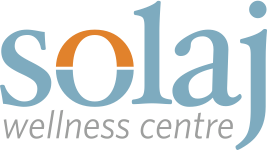The shoulder joint is extremely mobile, allowing us to move our arms freely and engage in many different types of activities. Because of it’s large range of motion, however, the shoulder is also very susceptible to getting injured.
Shoulder pain can come from the joint itself, or any of the many surrounding muscles, tendons or ligaments. Shoulder injuries can result from trauma (ie. a fall or motor vehicle accident) or repeated overhead movements from activities requiring repetitive arm and shoulder movement such as swimming, volleyball, tennis, hammering or other construction projects. Shoulder pain can also develop from wear and tear or be caused by the natural aging process.
Common Symptoms
- Pain in or around the shoulder
- Pain can radiate into the neck, back or arm
- Difficulty sleeping on the affected shoulder
- Crackling or popping sounds with movement
- Limited range of motion
- Loss of strength
Rotator Cuff Injury
Visit our Rotator Cuff Injury Page to learn more.
Internal Scar Tissue
Internal Scar Tissue is a thick, tough, fibrous material that the body creates to quickly repair a damaged tissue such as muscles and tendons. It can build up in any area of the body where there has been internal and/or external damage. Internal Scar tissue is a very common cause of recurring or chronic pain after sport or work injuries, after surgery and it also often intermixes with Osteoarthritis.
Visit our Internal Scar Tissue Page to learn more.Adhesive Capsulitis (Frozen Shoulder)
AC Joint Sprain or Separation (Separated Shoulder)
Impingement Syndrome
Tendonitis
Bursitis
Osteoarthritis
Progressive wear and tear on the joint, causing the cartilage that acts as a lubricant and shock absorber to break down, eventually resulting in bone-on-bone grinding. This condition also affects the muscles around the joint, causing them to become weak, tight, painful and prone to tearing.
Visit our Osteoarthritis Page to learn more.
Other Common Shoulder Conditions
- Shoulder instability and dislocation
- Fractures
- Pinched nerves
Cold Laser Therapy Shoulder Pain Treatment: Step 1
Cold Laser Therapy Shoulder Pain Treatment: Step 2
Cold Laser Therapy Shoulder Pain Treatment: Step 3
Removes Internal Scar Tissue: Inhibits and removes Internal Scar Tissue that naturally forms after an injury and can cause discomfort and a delay in healing.
Regenerates Muscle Tissue: Transfers light energy to the affected cells of muscle, regenerating and strengthening damaged muscle tissue to prevent future injury.
Activates Cartilage Production: Promotes the natural cartilage growth process by increasing the production of cellular energy (ATP).
Accelerates Bone Repair: Simulates the bone cells to replicate and produce new healthy bone tissue.
Nerve Regeneration: Helps damaged nerves to recover by growing the neural network and repairing vital insulation around the nerve.
Stimulates Blood Flow: Increases the delivery of oxygen and nutrients required for healing of the affected cells.
Visit our Cold Laser Therapy Page to learn more about how the treatment works.
